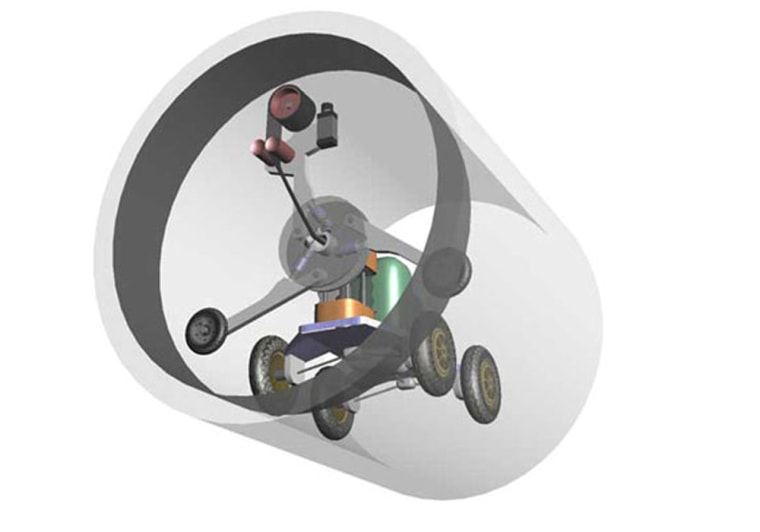Robots are great for going where humans can't, and the cramped confines of municipal water pipes are the perfect example. A new initiative is working on building robots that can access and repair aging water pipes from the inside.
Old pipes are a pressing issue for many cities. The American Society of Civil Engineers which rates the quality of city infrastructure, including water works, estimates that 6 billion gallons of clean drinking water disappears each day, mostly due to old, leaky pipes and mains. That's enough water to supply all the residents of California for a year.
"This is a nationwide emergency," said Maria Feng, civil & environmental engineering professor at the University of California, Irvine. "Some pipelines are nearly 100 years old, and the problem is very serious, especially in urban areas, where it’s difficult to access leaking and burst pipes."
In order to address the problem, Feng is leading a UCI engineering research team to build a robot that can travel along water pipes and repair them from the inside. Feng's team is also working with Fibrwrap Construction Inc. and Fyfe Company LLC, two companies that specialize in making repair materials and applying them to city infrastructure.
Feng's robot will save cities time and money by accessing broken and leaking pipes faster, easier and with fewer resources than traditional methods.
"Currently, construction crews must dig trenches to find damaged pipe segments, which is a passive and expensive way of fixing the water system," Feng said in a statement. "In cities, trenching can be impossible."
The repair robot could easily be inserted into water systems, travel along them until it finds a break or weak point, and then apply a patch made of tough reinforcement material along the inside of the pipe. Essentially, the robot would create a new fiber pipe inside the old damaged one.
The obstacles for this project involve creating a way for the robot to accurately identify flaws in pipes that have unpredictable shapes and uneven surfaces. Another problem is how to apply the reinforcement material.
Feng's team is integrating an advanced sensor system into the robot that can measure contact pressure against the sides of the pipe and activate the repair process where appropriate.
The robots can be built for various types and sizes of pipes and repair them 11 times faster than human crews, Feng estimates.
"If this project is successful," Feng said, "a commercialized robotic system could potentially save the U.S. economy about $245 billion and give the nation a lead in the growing world market for water infrastructure technology."
